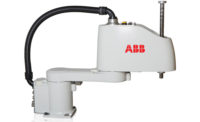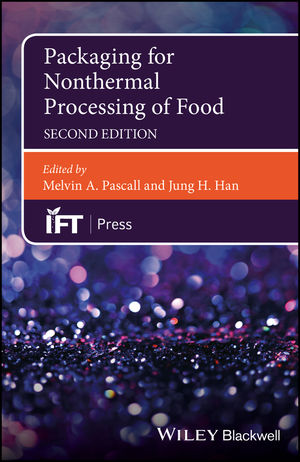We must all agree that sustainability is not just a fad after all, and that it is here to stay. How can we make that assessment? Legislation is nudging the packaging industry to move in the direction of a greener packaging pasture. Consumers are looking for packages that have less material to throw away and companies are investing in earth friendly packaging innovations.
Sustainable cellulose
Cellulose has been in the flexible packaging arena for a long while now, though some new environmentally friendly advancements make this flexible packaging component fresh again.
Eastman Chemical Company (www.eastman.com) has introduced a truly innovative bag package for liquid, the HydroPack, which is manufactured with sustainable cellulosic materials. This technology offers an emergency hydration solution for disaster relief, featuring Hydration Technology Innovations (HTI).
With HydroPack, users can now transform virtually any water source – lakes, streams, swimming pools and even contaminated flood waters and mud puddles – into clean and nutrient-enriched emergency drinks.
According to Eastman Chemical Company’s product information, “HydroPacks are powered by a seemingly magical filtration technology called Forward Osmosis, achieved through HTI’s proprietary membrane that is manufactured from Eastman’s cellulose acetate. Forward Osmosis is a natural equilibrium process. Two liquids are separated by a membrane that allows only water molecules to pass, while excluding larger molecules and toxic contaminants. In independent laboratory tests, HTI filters meet or surpass U.S. Environmental Protection Agency’s water purifier specification for reductions in bacteria, viruses and cysts.”
Wood pulp by-product used to create inks and coatings
Sun Chemical (www.sunchemical.com) has begun supplying coatings and inks that are produced from Arizona Chemical’s polyamide resins. Derived from tall oil fatty acid (TOFA), the polyamide resins are used in liquid inks utilized for flexible packaging films.
Tall oil fatty acid is a by-product of the conversion of wood into wood pulp when pulping mainly coniferous trees. Wood pulp, which is almost pure cellulose fibers, is the main raw material to make paper-based products.
Sun Chemical has included this partnership announcement in its Sustainability Report. “Arizona Chemical is dedicated to maximize bio-derived content in its products, with most of their products containing more than 75%, according to ASTM D6866 testing standards. Arizona Chemical have also conducted a life cycle assessment of TOFA in alkyd paint, showing that it would have a lower environmental impact than soya oil-based products on the four categories of human health, resources (i.e., non-renewable energy use), climate changed (i.e. greenhouse gas emissions), and ecosystem quality,”
According to the Arizona Chemical website, “As flexible packaging continues to make our lives easier novel packaging designs, inks used for printing on flexible films have increased their share in the printing industry. This trend is expected to continue with the introduction of improved high strength ink systems being developed. Arizona Chemical offers a wide range of tall oil dimer acid based polyamide ink resins.”
New 100% polyethylene stand-up pouch
The Dow Chemical Company (www.dow.com) has been known for its commitment to sustainability, and here’s another industry-leading innovation. Jeff Wooster, global sustainability leader for The Dow Chemical Company, tells us about Dow’s newly developed 100% polyethylene (PE) stand-up pouch.
“The 100 percent polyethylene (PE) stand-up pouch is an exciting and innovative launch for the company that continues to highlight its commitment to meeting consumer’s expectations and helping to create a better future for the environment,” says Wooster.
Its main characteristics include:
- Full and resistant sealing to avoid leaks
- Puncture and tear strength
- High recyclability as a result of the pouch’s monomaterial composition.
“Before, the SUP was unable to stand with just polyethylene, but now the 100 percent recyclable flexible package provides brand owners with a unique, glossy and aesthetically pleasing package that can showcase frozen products, liquids and dry foods,” says Wooster.
Dow is also working toward reclaiming plastic packaging and using it toward other forms, be it other packages or even energy.
“Here at Dow, we are actively working to expand all end-of-life options for plastic packaging. By capturing the value from used packages, we are working to shift end-of-life packages’ perception from waste to valuable resource. Dow developed the 100 Percent Recycling of Packaging philosophy to help the industry understand the full value of plastics packaging,” says Wooster.
“We hope that all future packages can be deposited into recycle bins and can be either mechanically recycled, chemically transformed, transformed into recovered energy or composted – assuring that their full value is captured.”
“Energy recovery, the practice of recovering the embedded energy in used materials, is a best-in-class approach that can offer additional end-of-life options for plastics, diverting them from disposal in landfills. The process can also provide a valuable alternative energy source, reducing the dependence of natural gas, oil and coal.”
Dow offers factual findings to support its efforts: In 2010, at Dow’s Michigan operation, “Ninety-six percent of available energy was recovered after 578 pounds of used linear low density polyethylene was thermally recycled – that is equivalent to 1.1 million British Thermal Units (BTU) of natural gas. Six additional tests were conducted in 2011, using 100 tons of non-recycled plastics (NRPs) and two billion BTUs of energy were saved.” That’s significant recovery, according to Wooster.
Dow’s commitment to 100% recycling of packaging includes participation from others, too. “Material Recovery Facilities (MRFs), waste haulers, local government authorities, plastics associations and brand owners will have to collaborate to increase the overall industry’s adoption of energy recovery and other emerging technologies. This viewpoint will require every member of the value chain to demonstrate and document the process’ many benefits, deliver easier methods for collection, recovery and mechanical recycling to consumers and industry, and develop an infrastructure to manage 100 Percent Recycling of Packaging initiatives. This is all while preserving the quality and value of the industry’s recovered material,” says Wooster.
In closing, large industry innovations like these prove that large companies are still investing in sustainable packaging and products for the flexible packaging industry. The innovations are endless, and so are the opportunities.











